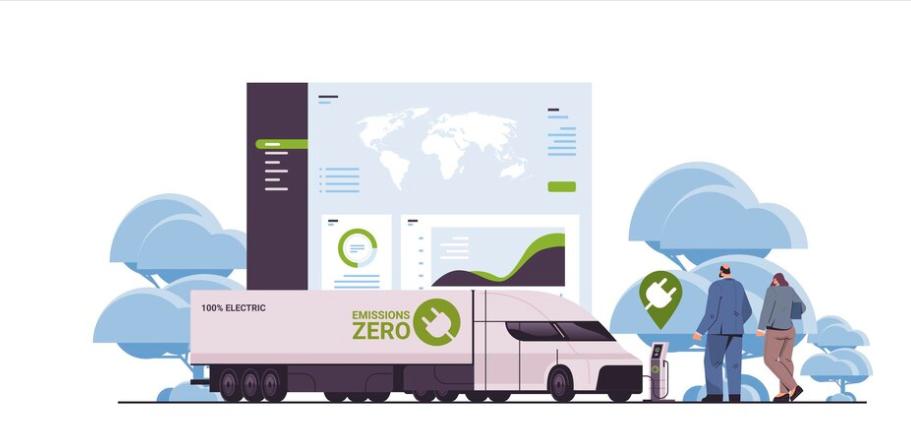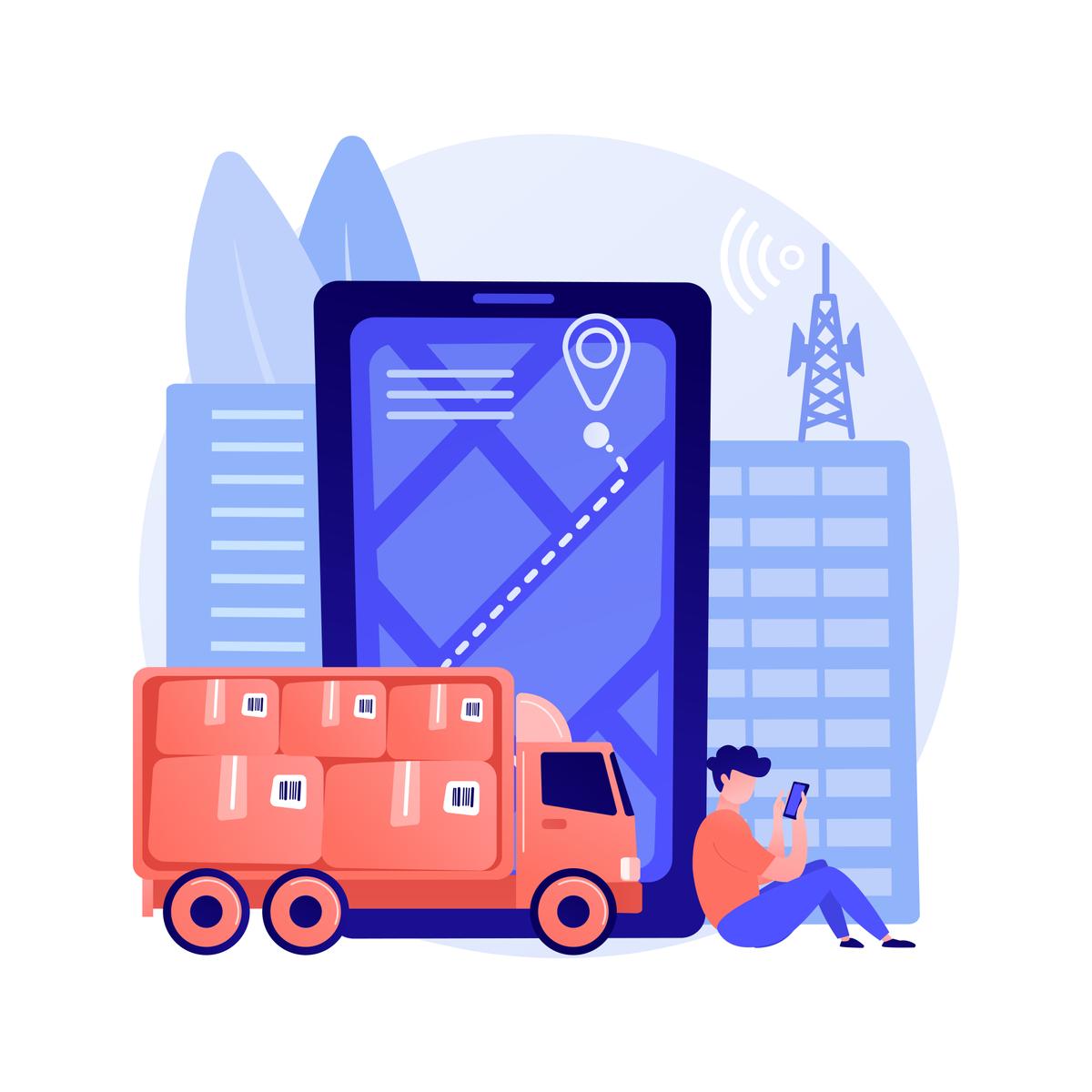
Explore the future of logistics with our comprehensive roadmap for 2024. Dive into innovative strategies and trends shaping the industry's planning landscape.
The seismic shifts caused by the pandemic spurred an unprecedented surge in e-commerce, reshaping consumer habits radically. Essential goods like hand sanitizers and daily necessities experienced a surge in demand, pressuring supply chains unexpectedly. However, post-pandemic, consumer preferences pivoted towards experiences over material possessions. This evolving landscape poses a new challenge for logistics teams: the imperative to flexibly meet swiftly changing consumer demands.
Simultaneously, the logistics industry grapples with evolving regulations, sustainability mandates, and an amplified focus on Environmental, Social, and Governance (ESG) benchmarks. To navigate this dynamic environment successfully, companies are compelled to look for logistics partners who prioritize data-driven strategies and sustainable practices, adapting to evolving market expectations.
Here are some of the things you trends you need to understand as you step towards 2024
Data-Driven Logistics Strategy Will Boom
In the contemporary logistics landscape, a data-centric approach is not just preferable but essential for success. Seamless coordination among stakeholders is pivotal for business continuity. Standardizing data collection methods and formats is key to enhancing information exchange within the supply chain network, optimizing efficiency and comprehension.
To fortify a robust data-driven logistics strategy:
- Establishing clear objectives and standardized data formats is pivotal for cohesive data interpretation across the network, curbing operational discrepancies.
- Cultivate a unified comprehension of real-time data across departments, ensuring consistency and agility in decision-making.
- Harness historical data to gauge capabilities and optimize logistics. Employing digital planners or innovative solutions like Transmetrics can provide crucial insights into metrics like demand patterns, optimal storage, and peak periods, bolstering operational efficiency.

Read More: Top trends every wholesale Distributor should know in 2023 & Beyond
Technological Advancements Will Boost Agile Logistics Planning
The fusion of human expertise and AI capabilities, termed Augmented Intelligence, is revolutionizing logistics planning. AI-powered forecasting tools leverage diverse data sources to predict demand accurately, optimize shipping needs, and augment capacity utilization. Careful selection and integration of technology play a pivotal role in enhancing supply chain efficiency.
Key steps to enhance supply chain efficiency include:
- Thoughtful selection of technology aligned with specific logistics needs, backed by unbiased research and supplier evaluations.
- Facilitating seamless integration between new and existing technologies to enable real-time data sharing and communication across departments.
- Redirecting employee focus from mundane tasks to strategic planning and customer-centric solutions by leveraging automated processes.
Data Visibility Becomes Crucial to Meet Evolving Customer Expectations
Amidst the surge in online deliveries, customer expectations have evolved beyond rapid delivery to include flexibility and control. Transparent data visibility is indispensable in meeting these dynamic consumer demands, enabling shipment tracking and insights into sustainability practices.
Strategies to meet customer expectations include:
- Precision in delivery slot estimations by understanding location-specific journey times and order frequencies for optimized route management.
- Transparent communication through delivery windows, enhancing driver flexibility, and ensuring a seamless customer experience with visible tracking.
- Mitigating disruptions through contingency plans like dual-sourcing and localized stock distribution for enhanced operational flexibility.
Recommended Reading: Customer Service In Logistics: Top Tips To Help You Deliver Excellent Customer Experience
The Emergence of Generative AI Will Improve Prediction & Patterns Identification
Generative Artificial Intelligence (AI) stands to revolutionize logistics operations, offering multifaceted solutions to complex challenges. This technology is anticipated to transform various aspects of logistics management, including:
- Generative AI can redefine how inventory is managed by predicting demand patterns more accurately. It streamlines inventory levels, reducing stockouts and excess stock, thereby optimizing storage and enhancing efficiency.
- AI-driven algorithms can identify potential risks within the supply chain, offering predictive insights to preempt and mitigate disruptions. This proactive approach enables businesses to adapt swiftly to unforeseen challenges.
- Chatbots and virtual assistants powered by generative AI facilitate enhanced real-time communication within logistics teams. These AI-driven tools streamline and expedite information exchange, improving overall productivity and responsiveness.
Focus on Reducing Carbon Emissions Will Take Centre Stage
In response to growing environmental concerns and consumer demand for sustainability, a concerted effort to reduce carbon emissions will be a pivotal trend in logistics for 2024. Key areas of focus include:
- With a rising awareness of environmental impact, customers increasingly prioritize sustainable practices. Logistics companies are expected to adopt eco-friendly measures to align with these consumer preferences, reducing carbon footprint and embracing sustainable transportation solutions.
- Stricter regulations and policies aimed at reducing carbon emissions will compel logistics firms to reevaluate their operations. This includes implementing eco-friendly transport modes, optimizing routes to minimize fuel consumption, and exploring renewable energy sources.
Learn More: Triple Bottom Line: The Yardstick to Measure Sustainability in the Supply Chain

Rise of Asset-Light Logistics Ensures Cost Efficiency
Businesses are increasingly gravitating towards asset-light logistics models due to their inherent flexibility, cost-efficiency, and scalability. Key facets of this trend encompass:
- Asset-light logistics models prioritize flexibility by reducing reliance on physical assets. By leveraging third-party logistics (3PL) providers for transportation and warehouse operations, companies minimize fixed costs associated with asset ownership.
- The asset-light approach allows businesses to adapt swiftly to changing market demands and seasonal fluctuations without being hindered by the constraints of asset ownership. This flexibility enables better scalability and cost management.
Relevant Reading: The Essential Guide to Smart Warehousing: Navigating Modern Logistics
Adoption of Cloud-Based Tech Solutions Streamlines Unhindered Data Sharing
The integration of cloud-based solutions is poised to redefine logistics operations, offering a suite of benefits including:
- Cloud-based solutions streamline logistics processes by centralizing data, providing real-time visibility, and enabling seamless collaboration among various stakeholders.
- Cloud-based platforms offer scalable solutions that adapt to business needs. Moreover, these solutions come with robust security measures, ensuring data protection and integrity.
- Implementing cloud-based tech minimizes the need for significant infrastructure investments. It reduces operational costs by eliminating the need for extensive in-house IT infrastructure and maintenance.
Top Technology Trends to Watch in Logistics for 2024

Hyperlocal Delivery Networks:
One of the prominent trends in logistics is the rise of hyperlocal delivery networks. Companies are strategically establishing smaller fulfillment centers to enable faster same-day or within-the-hour deliveries. These networks leverage advanced route optimization algorithms and AI-powered logistics, meeting the increasing consumer demand for immediate service.
Drone and Autonomous Delivery:
The logistics sector is embracing drone fleets and autonomous delivery vehicles to enhance last-mile delivery efficiency. These technologies promise reduced operational costs and carbon emissions while significantly improving delivery speed and reliability, especially in remote or congested areas.
Blockchain for Supply Chain Transparency:
The integration of blockchain technology into logistics enhances supply chain transparency. Using blockchain's immutable ledger, companies can track goods' movement throughout the supply chain, ensuring authenticity, reducing fraud, and fostering trust between buyers and sellers.
Dynamic Routing:
Dynamic routing is pivotal in 2024's logistics landscape, optimizing delivery routes. Similar to networking principles, it adapts to changing conditions, ensuring uninterrupted communication and operational efficiency. This approach aligns with evolving supply chain needs, curtails excess inventory, and streamlines operations for cost savings.
Sustainability Initiatives:
Sustainability is gaining traction in logistics, with companies adopting eco-friendly practices. Initiatives include eco-friendly packaging, optimized delivery routes to reduce emissions, and investment in renewable energy sources. These initiatives not only align with global environmental goals but also cater to conscious consumers, offering a competitive edge.
Navigating the Modern Logistics Landscape
Adapting to the shifting logistics landscape in 2024 demands agility, flexibility, and a commitment to innovation. Data-centric practices, cutting-edge technologies, and customer-centric strategies are key to success.
The journey to modern logistics planning demands adaptability and resilience. Transparent data exchange and automated communication empower logistics planning to meet dynamic consumer demands and swiftly navigate disruptions.
Logistics service providers must enhance visibility and reliability to align with the evolving expectations of 2024's consumers. Leveraging technology enables logistics teams to strategize effectively, respond adeptly to trends, and proactively prepare for unforeseen disruptions.